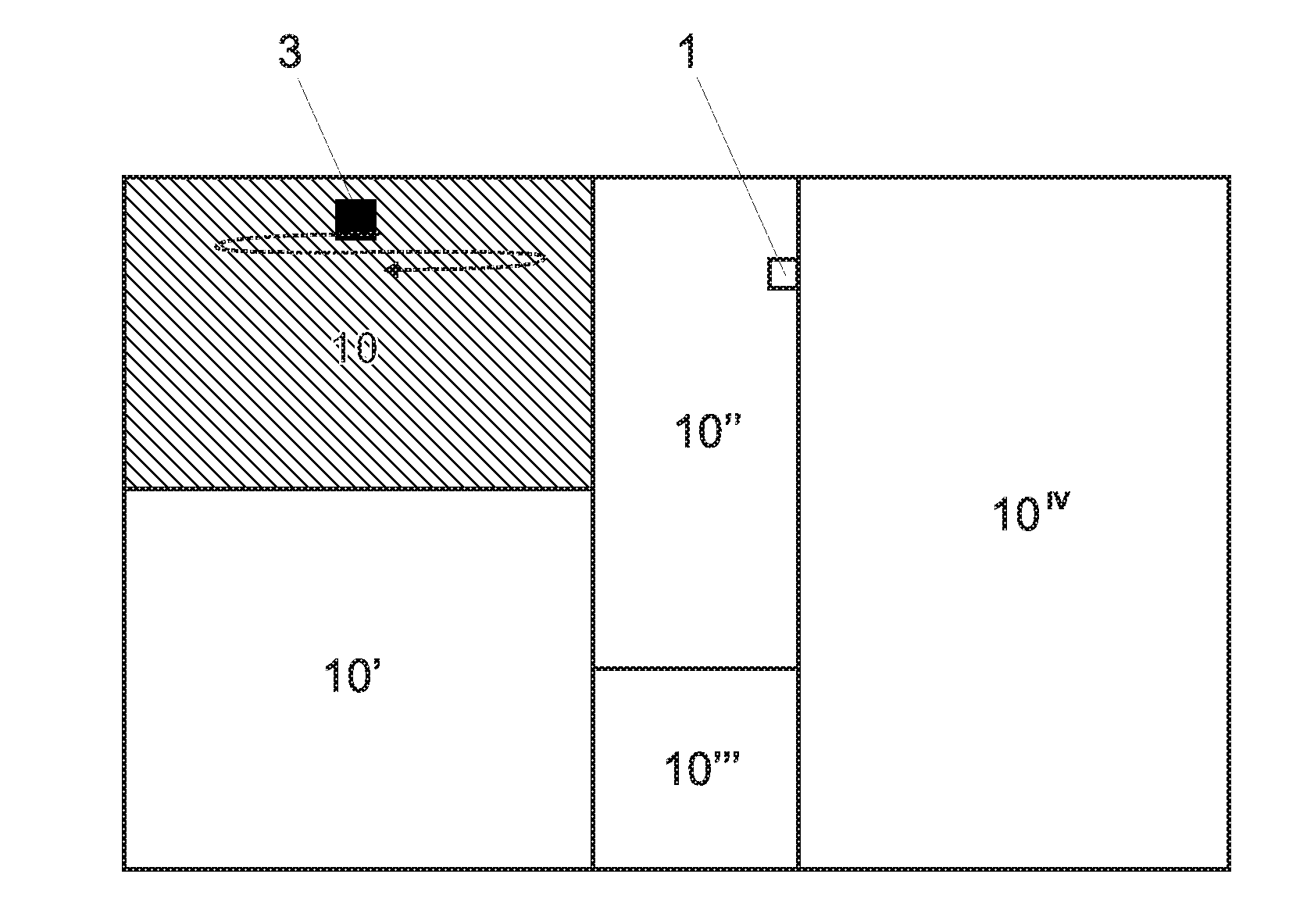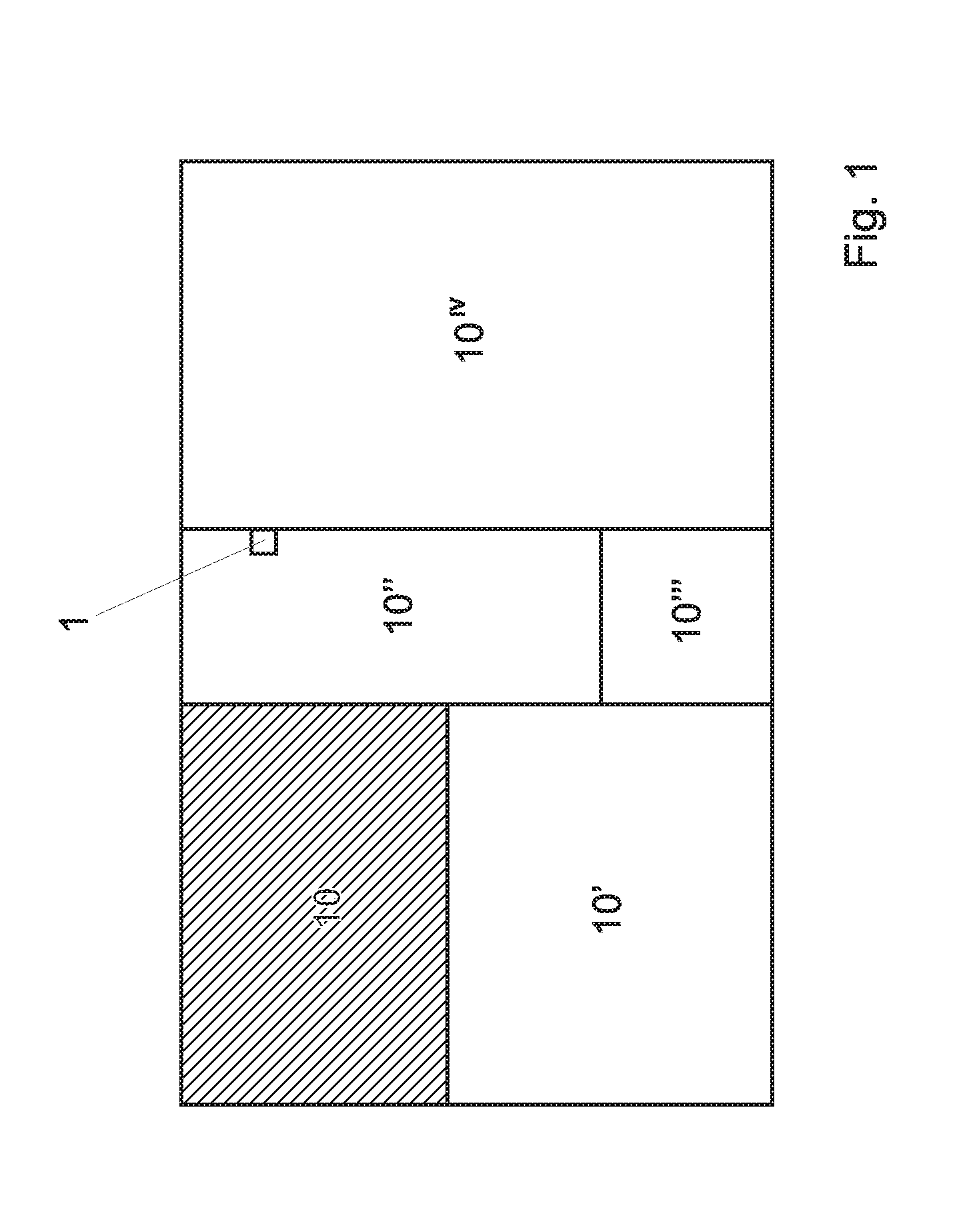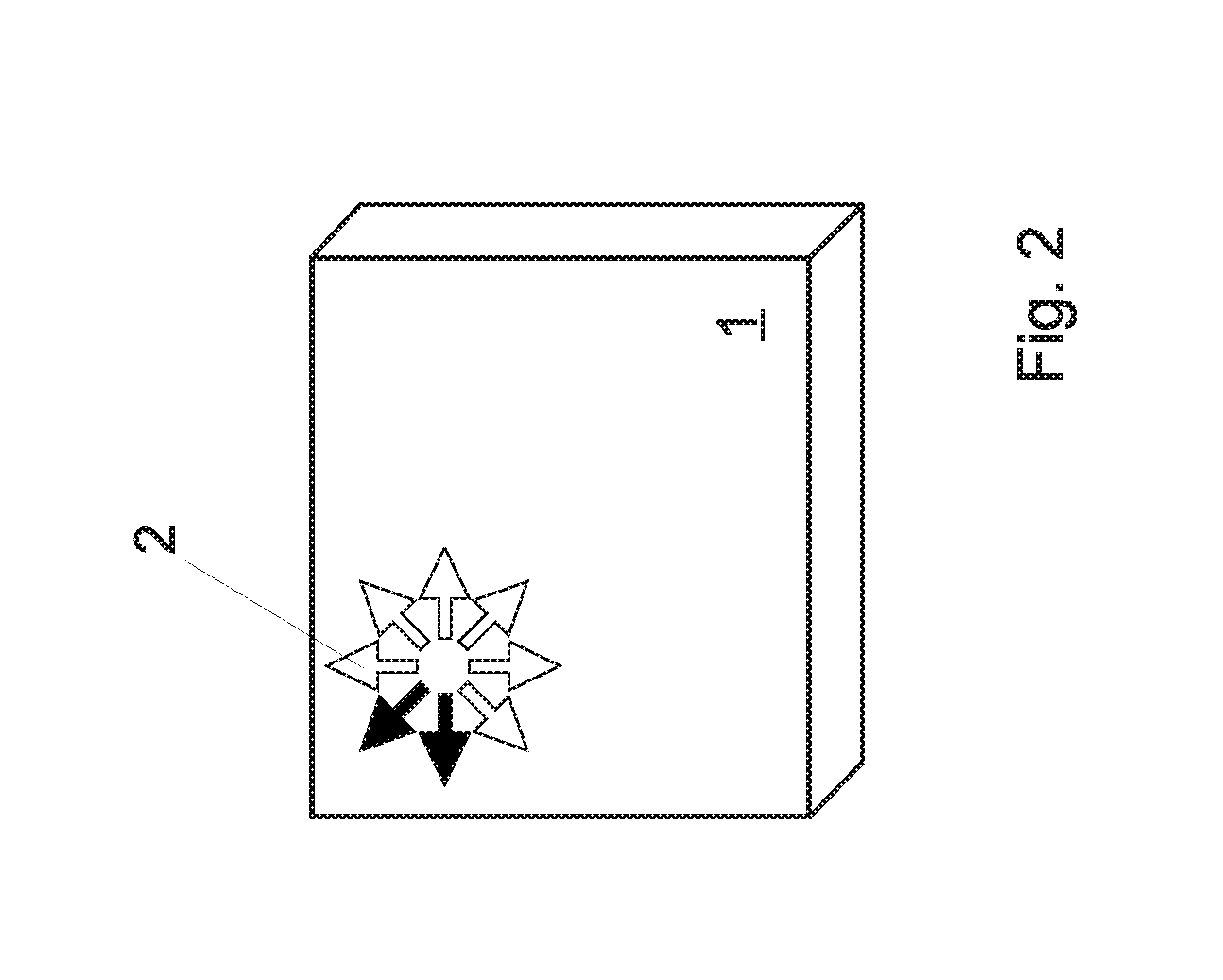User-controlled method and system for modifying the radiation of a wireless device in one or more user-selected volumes
a wireless device and user-selected technology, applied in the direction of wireless commuication services, location information based services, network topologies, etc., can solve the problems of insufficient reduction in other directions, limit the useful direction of emission range, and no easy way in the prior art for users, so as to reduce the signal level and accurate results
- Summary
- Abstract
- Description
- Claims
- Application Information
AI Technical Summary
Benefits of technology
Problems solved by technology
Method used
Image
Examples
Embodiment Construction
[0058]FIG. 1 shows a view of the floor plan of an exemplary apartment in which the method according to the invention can be performed, and of the volume(s) in which the intensity of the radiation of a wireless device 1 should be modified, for example reduced or increased.
[0059]In fact it is possible that a user installing a wireless device 1, e.g. an access point, does not want to have the same signal strength or power in his / her whole apartment. As depicted in FIG. 1, the signal strength shall be e.g. smaller in one room of the apartment either to reduce interference, reduce exposure of persons to radiations, reduce the power consumption of the device, increase the intensity in other directions, or for any other reasons when no wireless signal is needed or wanted in a room.
[0060]The apartment illustrated in FIG. 1 comprises one floor such that all its rooms are on the same floor. However the method according to the invention can be applied also in the case wherein the apartment com...
PUM
 Login to View More
Login to View More Abstract
Description
Claims
Application Information
 Login to View More
Login to View More - R&D
- Intellectual Property
- Life Sciences
- Materials
- Tech Scout
- Unparalleled Data Quality
- Higher Quality Content
- 60% Fewer Hallucinations
Browse by: Latest US Patents, China's latest patents, Technical Efficacy Thesaurus, Application Domain, Technology Topic, Popular Technical Reports.
© 2025 PatSnap. All rights reserved.Legal|Privacy policy|Modern Slavery Act Transparency Statement|Sitemap|About US| Contact US: help@patsnap.com



